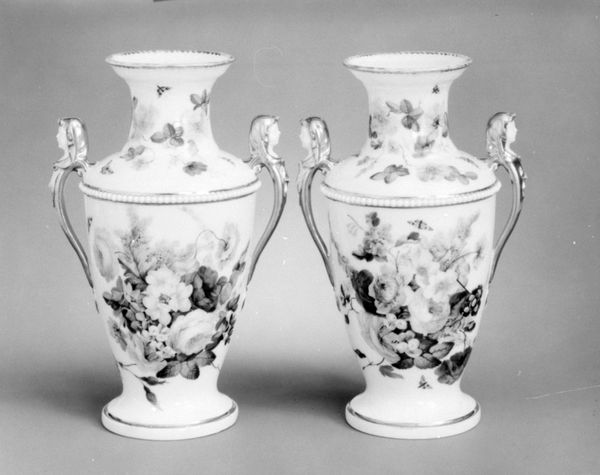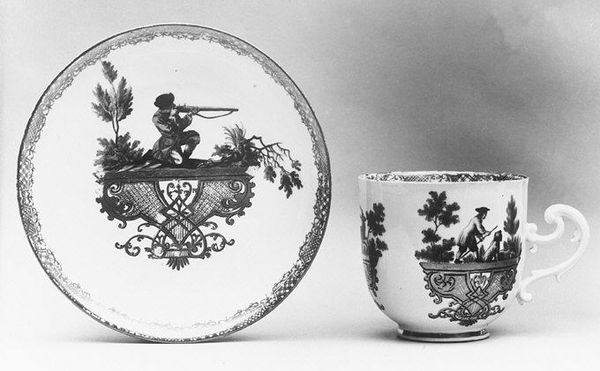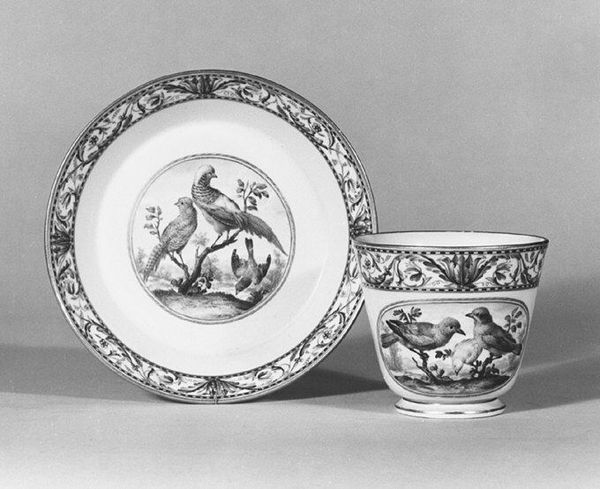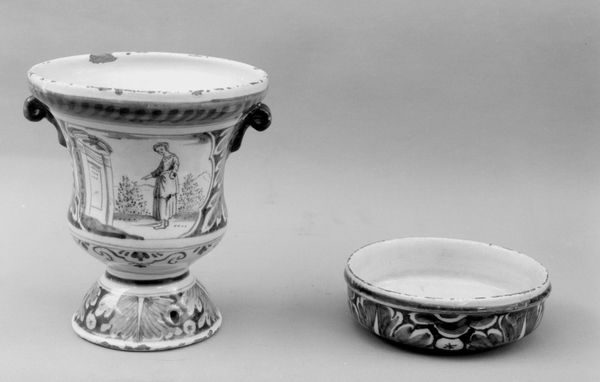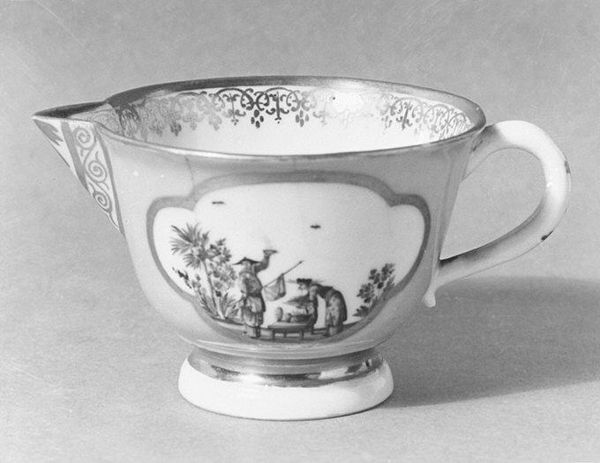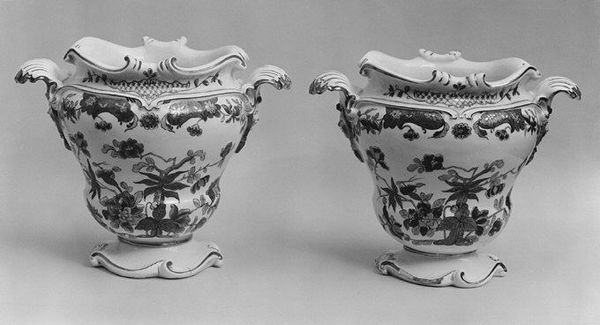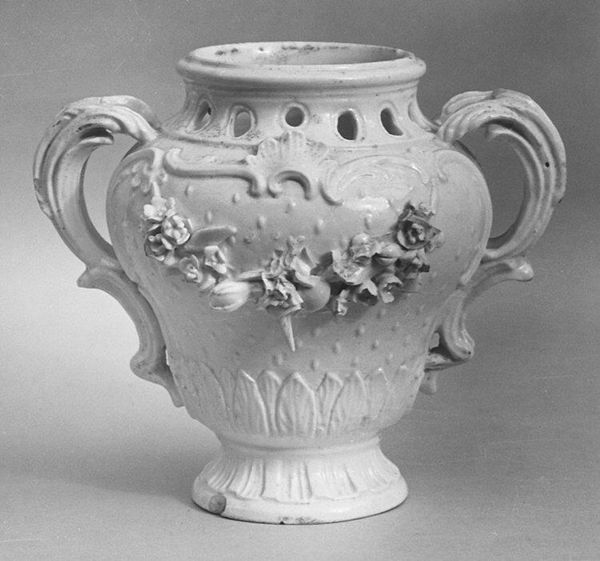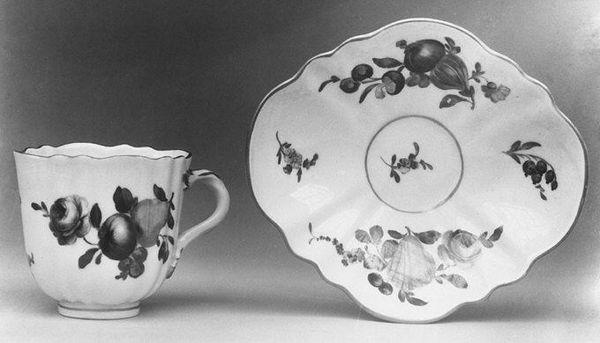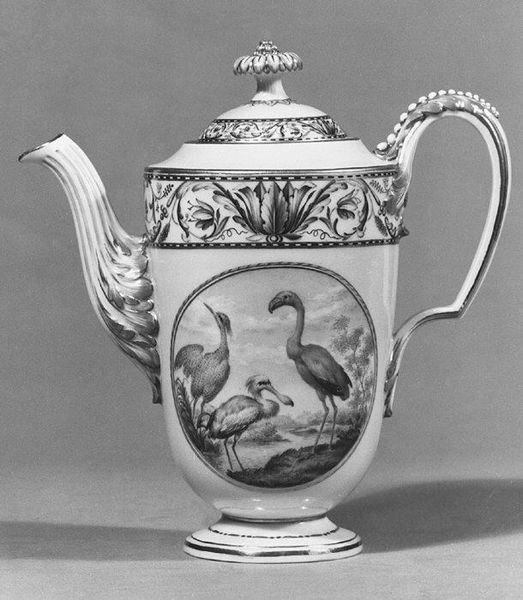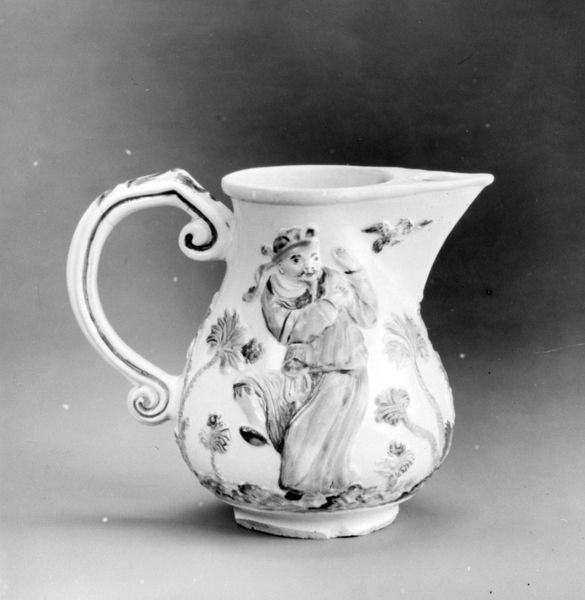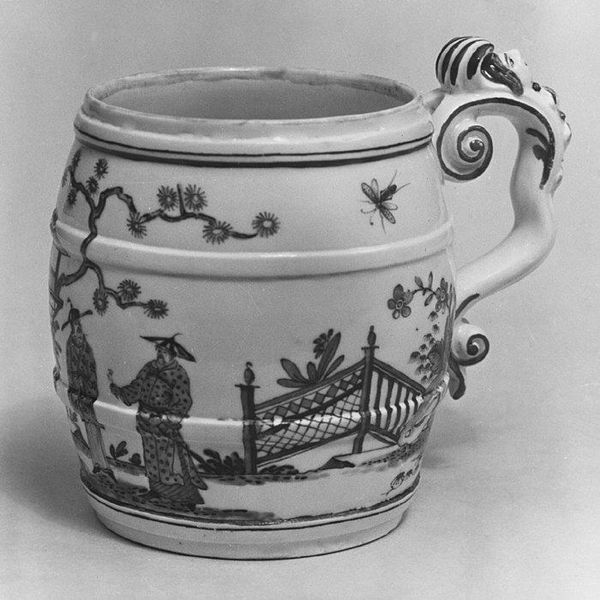
ceramic, porcelain, sculpture
#
baroque
#
animal
#
ceramic
#
porcelain
#
sculpture
Dimensions: Height: 5 1/2 in. (14 cm)
Copyright: Public Domain
Curator: Here we have a pair of vases, crafted from porcelain in Meissen, Germany, sometime between 1730 and 1740. They showcase the delicate craftsmanship and artistry that Meissen is celebrated for. Editor: I’m immediately drawn to their seeming fragility—almost like delicate, decorative bones. The pale ground highlights the intricate animal and botanical designs in an elegant, almost subdued way. It makes me wonder about their place, then and now, within the cultural politics of display and prestige. Curator: Well, these pieces embody the Baroque fascination with both the natural world and the aristocratic lifestyle. Porcelain, at the time, was an incredibly luxurious material, almost exclusively owned by European nobility. The depictions of animals and lush foliage speak to a larger interest in understanding, classifying, and ultimately, controlling nature. Editor: That control, or the illusion of it, is precisely what resonates. Notice how nature is neatly arranged within the vase's perimeter. We are also looking at how societal privilege has historically intersected with object making, perpetuating inequality while creating works deemed "beautiful" that mask often brutal histories of colonialism. Curator: Absolutely. These objects are powerful tools to reinforce status. Their presence in collections speaks to our contemporary relationship with history and how we choose to value and contextualize objects produced in exclusionary spaces. Editor: I also think the symmetry adds a dimension, reinforcing that controlled aspect and further emphasizing power dynamics—what appears beautiful is not always benign when critically evaluated. The scenes, while lovely, also echo the societal imbalances embedded in art. Curator: What's interesting to me is their continuous appeal. Despite the changing values over time, we still find artistry and skill in them. It pushes us to examine our notions of beauty critically. Editor: Exactly. We have a responsibility to see and name this past, and this allows conversations that transform inherited social structures into possibilities for access and equity for historically excluded communities.
Comments
No comments
Be the first to comment and join the conversation on the ultimate creative platform.
